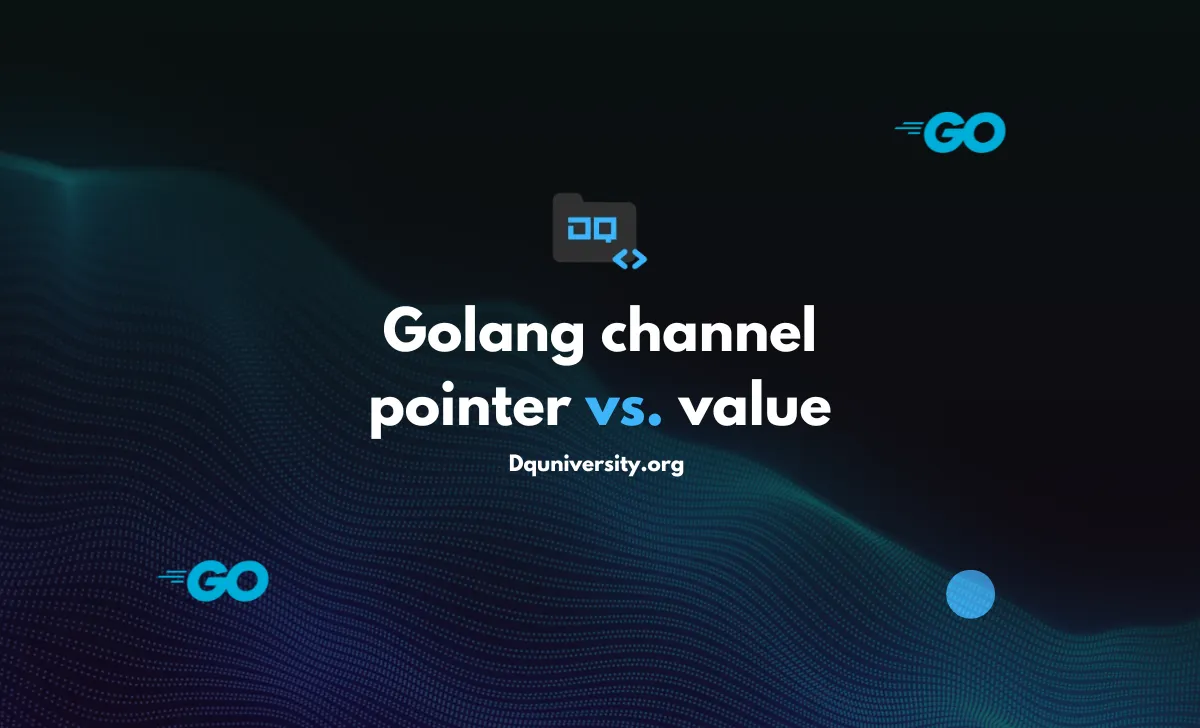In the realm of concurrent programming in Go, the choice between using a channel as a pointer or a value carries significance. In this exploration, we dissect the nuances of “Golang channel pointer vs value,” providing a clear roadmap for developers navigating the intricacies of concurrent communication.
Table of Contents
1. Pointer Channels: Shared State, Shared Responsibility
- Pointer Semantics: Channels used as pointers enable shared state among multiple goroutines. Modifications in one goroutine impact others sharing the same channel instance.
- Concurrency Challenges: Shared state introduces the need for meticulous synchronization to avoid race conditions. Mutexes or other synchronization mechanisms become crucial to maintain data integrity.
2. Value Channels: Isolation and Simplicity
- Value Semantics: When channels are used as values, each goroutine possesses its copy of the channel. Modifications in one goroutine remain isolated and don’t affect others.
- Synchronization Simplified: With independent channel instances, the complexity of synchronization diminishes. This approach contributes to cleaner and safer concurrent programming.
3. Memory Management: Balancing Efficiency and Independence
- Pointer Channels: Channel pointers can reduce memory overhead as they are reference types. Passing pointers between functions or goroutines avoids unnecessary channel copying.
- Value Channels: Creating copies of channels may have a slightly higher memory footprint. However, it ensures that each goroutine operates on an independent channel instance.
4. Code Illustrations
Pointer Channels:
package main
import (
"fmt"
"sync"
)
func main() {
var wg sync.WaitGroup
ch := make(chan int)
wg.Add(2)
go func(chPtr *chan int) {
defer wg.Done()
*chPtr <- 42
}(&ch)
go func(chPtr *chan int) {
defer wg.Done()
val := <-*chPtr
fmt.Println("Received from channel:", val)
}(&ch)
wg.Wait()
}
Value Channels:
package main
import (
"fmt"
"sync"
)
func main() {
var wg sync.WaitGroup
ch := make(chan int)
wg.Add(2)
go func(chVal chan int) {
defer wg.Done()
chVal <- 42
}(ch)
go func(chVal chan int) {
defer wg.Done()
val := <-chVal
fmt.Println("Received from channel:", val)
}(ch)
wg.Wait()
}
In Summary:
The decision between Golang channel pointer vs value hinges on the specific demands of your concurrent application. Shared state and complex synchronization may warrant the use of channel pointers, while independent communication and simplicity favor the use of channel values. Striking the right balance ensures pragmatic and effective concurrent programming in Go.
Read Also About:

